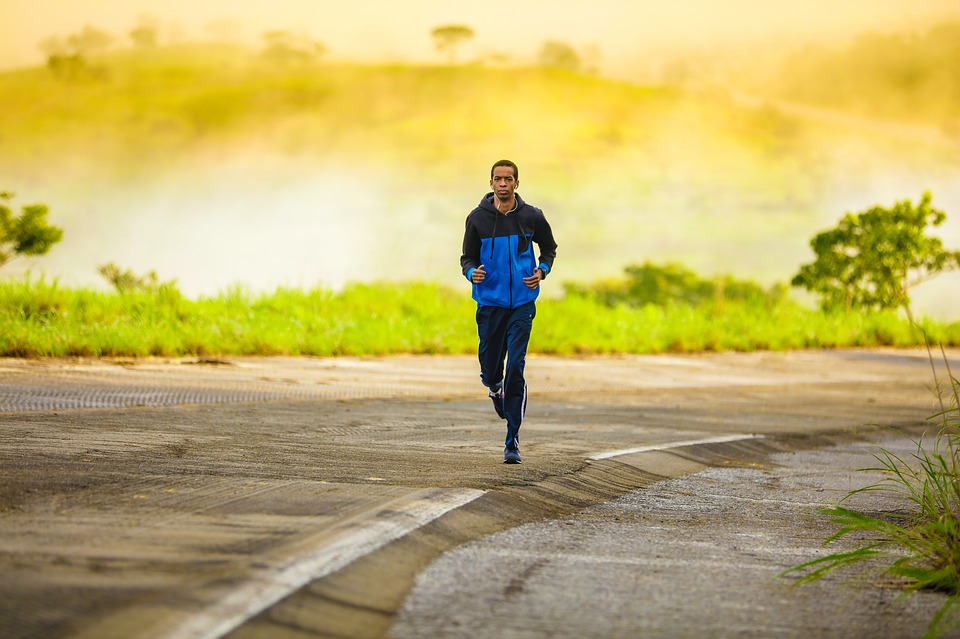Here at United EVENTures, we highly value an active lifestyle. We believe in getting outside and being active as often as possible. For many of us, however, it is incredibly difficult to lose weight and get as fit as we’d like, despite regular exercise. What happens when you feel like you’ve tried everything, but your exercise doesn’t seem to pay off? Here are three easy and simply changes to lose that weight more easily, without extreme dieting or other major life changes.
Know How to Rev Your Metabolism Early in the Morning
As we all know, one of the most important keys for burning fat is having a fast metabolism. That’s why it’s so important to rev your metabolism early in the morning. By kicking your metabolism into gear early in the AM, this will allow your body to process food better the rest of the day.
We’ve all heard that breakfast is the most important meal of the day. You may also have heard that you should eat breakfast within an hour of waking up. That’s because breakfast is one of the best ways to rev your metabolism, and eating within the first hour of waking allows you to kickstart it quickly. However, certain breakfast foods will rev your metabolism more than others. According to Prevention.com eating a fiber-rich breakfast can boost your metabolism by 30%. Additionally, meals with protein can boost your metabolism by 35%. Thus, if you’re looking for a good metabolism boosting breakfast, try going for that extra dose of fiber and protein.
So what should you have for breakfast? For some extra protein try: high protein cereals, eggs/vegan eggs, yogurt, sausage/veggie sausage, or high protein oatmeals. For fiber try: bran muffins, fruits and veggies, high fiber cereals, or some oatmeal with almonds. Try mixing and matching to get a metabolism boost from both ends! A good sample breakfast includes eggs and a bran muffin, or some yogurt and fruit. And remember not to skimp on your breakfast, or your metabolism will think it needs to conserve energy instead.
Your ideal breakfast doesn’t end with the foods you eat. Luckily enough, our morning tea or coffee does more than give you energy to start your day. In fact, both do a marvelous job of boosting your metabolism. If you’re running out the door late and don’t have time for a breakfast, do your metabolism a favor and at least remember to grab a cup of joe when you first wake up.
Know How to Burn Fat, Not Just the Carbs
So you may now be convinced to eat your breakfast within the first hour of waking. However it may be better for you to eat breakfast after you exercise. A recent article by Men’s Fitness called attention to a study in Belgium which analyzed this very question. Because many people understand the benefit of eating breakfast early, they were surprised to find that participants were healthier and gained less weight when they exercised on an empty stomach, and then ate breakfast.
So why did these results occur? It may be because both exercise and eating breakfast effectively jump start your metabolism. However, if you start your morning with a workout, your body has not yet received food that it can use as energy. Thus, during your workout your body will pull energy from fat cells instead of carbohydrates, causing you to burn fat more rapidly.
So what’s the takeaway? When should you exercise and when should you eat breakfast? The most important thing is to somehow boost your metabolism within 30 or 60 minutes of waking. Ideally, this means waking up, starting your day with a workout, followed by breakfast and coffee, and then heading off to work. However, if this does not fit into your schedule, make sure you either workout or eat breakfast first thing in the morning. If you choose to workout before leaving the house, grab a coffee and breakfast on your way to work. If you instead opt to eat breakfast first thing, try working out before lunch or dinner.
Narrow Your Eating Window
Most of us know that late night snacking is bad, but few of us have heard of the “12 hour window.” The New York Times and Peak Fitness recently called attention to several studies which demonstrated the impact of restricted eating times. A restricted eating window refers to the number of hours between the first food you consume to the last. So if you eat breakfast at 7 AM and have your last snack around 9 PM, you have a 14 hour eating window.
These studies showed that when mice were given a 9, 12, 15, or 24 hour eating windows, those with the 9 and 12 hour windows were significantly thinner. Some of the mice that were allowed to eat whenever they wanted (in the 24 hour group) were switched midway to these restricted windows, and actively lost weight following the switch.
So why does sticking to a 12 hour eating window help? There are a couple theories, and it is likely a combination of the two. The first is that when your body is constantly consuming food, it never has to dip into fat stores to fuel its energy needs. So instead, it continues to use energy from the foods you are eating. The second is that by restricting yourself to a shorter eating window, it improves your body’s circadian rhythm. The stronger your body’s natural circadian rhythm, the faster your metabolism.
Believe it or not, the 12 hour window begins and ends the second you consume any food product. That means that the second you have coffee with milk in the morning, your clock starts ticking. Even that evening tea with honey impacts your restricted window. In order to narrow your window, stick to water, or black tea and coffee. Take note of the moment your window starts each day, and make sure you are finished with dinner and all evening snacks by the time your 12 hours have elapsed. I.e. if you start breakfast at 7 AM, you should be done eating for the day at 7 PM.
Take-Home Ideas
Overall, remember these three main ideas. Sometimes we can’t lose weight because we don’t even know what habits we need to fix!
- Eat a breakfast rich in protein, fiber, and coffee or tea to get an optimal metabolism boost.
- Make the first thing you do each morning either exercise or eating breakfast. If you exercise first, make sure to eat breakfast right after. If you don’t have time to exercise in the morning, try exercising before lunch or dinner when you haven’t eaten very recently.
- Narrow your eating window to 12 hours, including snacks and cream or sugar in your coffee.
Do you have any other ideas or suggestions? Let us know about your experiences in the comments below!


















